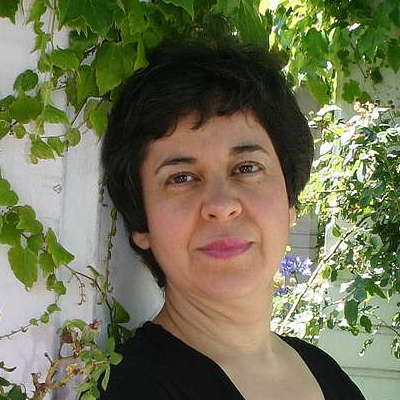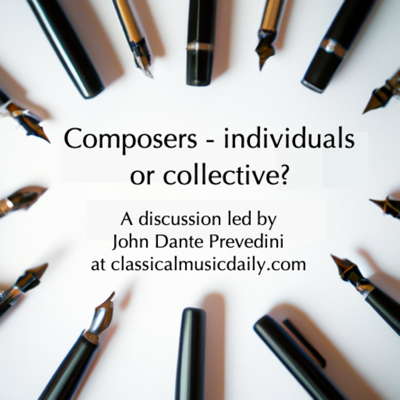 DISCUSSION: John Dante Prevedini leads a discussion about Composers, individuals or collective?, including contributions from David Arditti, Halida Dinova, Robert McCarney and Jane Stanley.
DISCUSSION: John Dante Prevedini leads a discussion about Composers, individuals or collective?, including contributions from David Arditti, Halida Dinova, Robert McCarney and Jane Stanley.
Breath-taking Delicacy
MIKE WHEELER is impressed with Grieg and Shostakovich from pianist Elisabeth Brauss, conductor Alpesh Chauhan and the Hallé Orchestra
Alpesh Chauhan first came to wide attention during his years as Assistant Conductor with the City of Birmingham Symphony Orchestra, and his career has since taken off in a big way. So too has that of pianist Elisabeth Brauss, a former BBC New Generation Artist. Together with the Hallé Orchestra, they gave one of the most beguiling performances of the Grieg Piano Concerto I can remember.
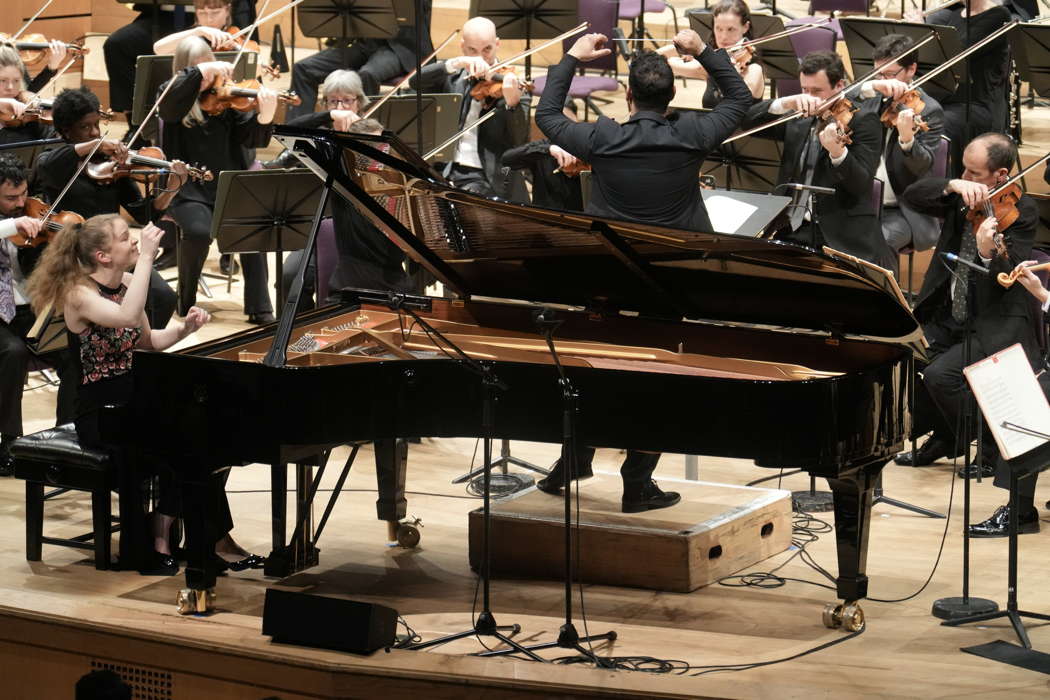
Elisabeth Brauss playing Grieg's Piano Concerto with Alpesh Chauhan and the Hallé Orchestra at Nottingham Royal Concert Hall on 27 January 2023
Brauss's imperious opening flourish told us that the big rhetorical moments were going to be in safe hands, but it was the quiet moments that made an even bigger impression. Her control of dynamics produced passages of breath-taking delicacy, and an expressive range, from the impetuous to the inward, that somehow all hung together. The cadenza was a carefully graded crescendo to the final trill. The orchestra's contribution was equally engrossing, particularly some wonderfully limpid woodwind sonorities.
The change of key for the second movement felt like a real shift of perspective, and Brauss's first entry, sensitive and wistful, established a magical atmosphere which held us all spellbound. The finale set off with plenty of bounce to the halling, the first of the two traditional Norwegian dances Grieg draws on in this movement. Following Amy Yule's almost vocal phrasing in the big flute solo, Brauss's musing in the slower episode never became shapeless. Turning the duple-time halling into a triple-time springdas felt almost inevitable, rather than the lurch that sometimes happens. The orchestra was all smiles as Brauss took her solo bow - the players clearly loved working with her. In her encore - 'Prelude', No 7 of Prokofiev's Ten Pieces, Op 12 - there was more of the same, not least some astonishingly delicate right-hand glissandos.
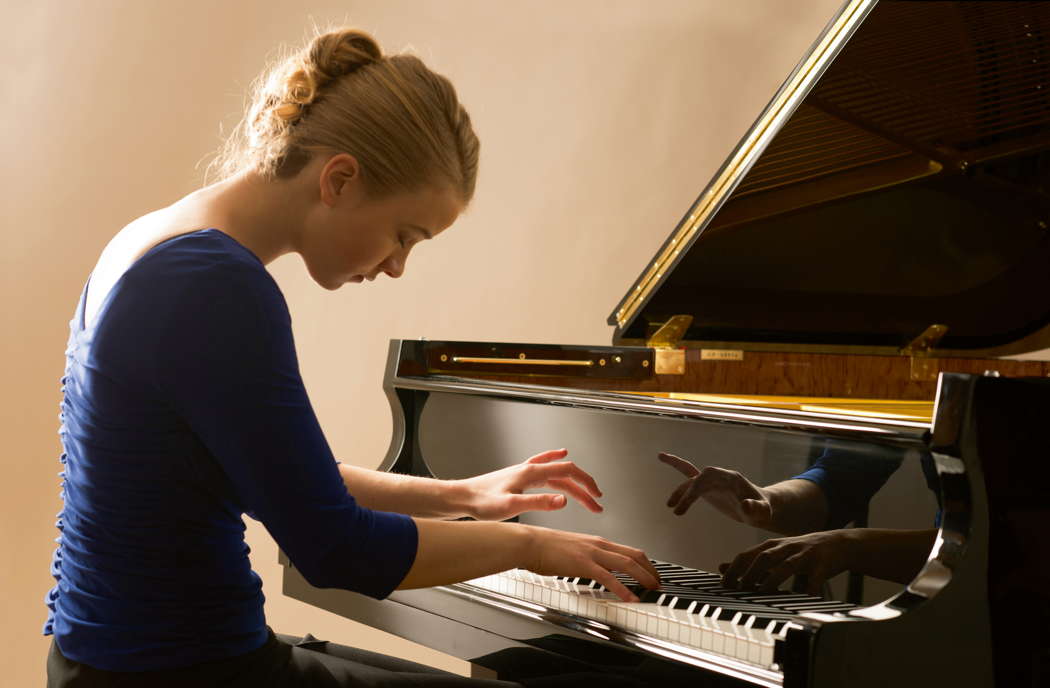
German pianist Elisabeth Brauss. Photo © 2013 Monika Lawrenz
Shostakovich's Symphony No 10 got an appropriately big-boned reading after the interval. Chauhan and the orchestra were clearly not just going for immediate effect but were carefully charting the work's overall structure. The mixture of brooding and expectation in the first movement's sombre opening for cellos and basses was tempered by Sergio Castelló López's half-lament, half-yearning clarinet solo. The intensity of the central climax was well sustained, as Shostakovich rages against the dying of the light - or maybe the light has already gone out. As the two piccolos, Sarah Bennet and Joanne Boddington, performed their forlorn slow dance at the end, we were left with one huge question mark.
The whirlwind second movement, in the fastest performance I think I've heard, was a blistering white-knuckle ride, with totally secure playing. The third movement's inscrutable beginning is probably the only plausible response, the studied nonchalance masking churned-up feelings beneath. Laurence Rogers's solo horn-call, whatever its origins in Shostakovich's private life, came across here, initially at least, as an attempted rallying-cry, however much it faltered on its later appearances. There was a note of uncertain gaiety in the fairground waltz, leading to more rage, before Shostakovich's retreat back behind the mask, with flute and piccolo insistently repeating his DSCH signature motif.
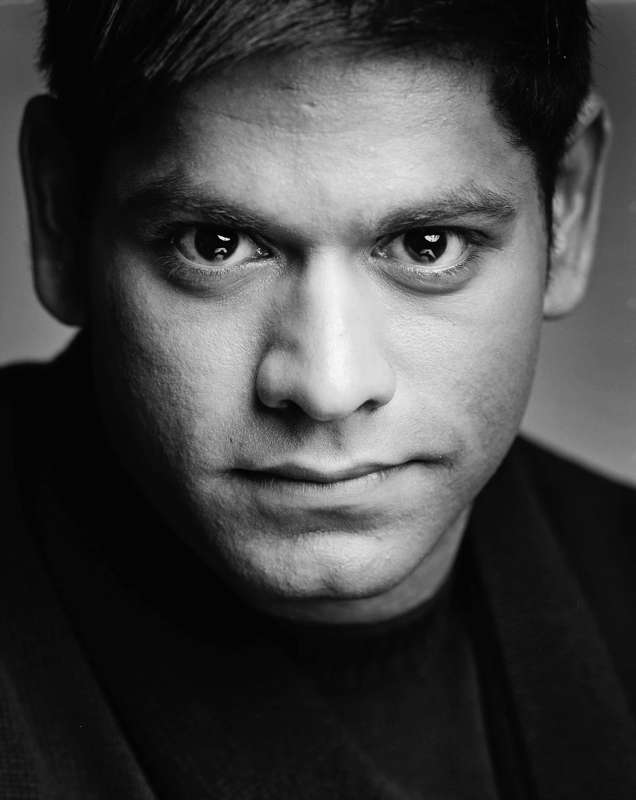
Alpesh Chauhan. Photo © Alexander Basta
The finale followed after a minimal break, with desolate woodwind lines featuring a plangent bassoon solo from Emily Hultmark. The abrupt switch to the skippy quick music seemed here like Shostakovich taking a gulp as he decides to put on a brave face. The high spirits were certainly tinged with awareness of the darker places we had been through, and of course there was one more to come, as conductor and orchestra recklessly powered through to the big final climax, with its colossal roar of the DSCH motif. The race to the finish had an air of Shostakovich determined to relight the lamp, while aware of the potential hazards. This is a piece you can never get to the bottom of, but Chauhan and the Hallé Orchestra made as determined an attempt as any.
Copyright © 3 February 2023
Mike Wheeler,
Derby UK



